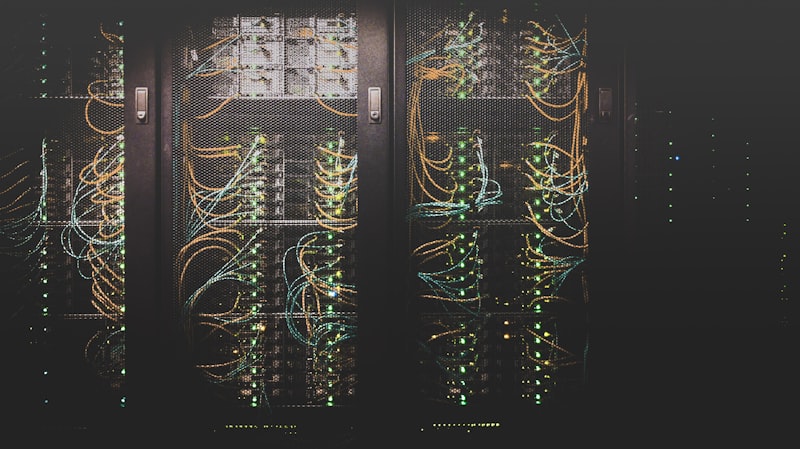Introduction
Knowledge management has long been a challenge for organizations of all sizes. From small businesses to large enterprises, the ability to effectively store, retrieve, and utilize organizational knowledge can be the difference between success and stagnation. Traditional knowledge management systems have relied on keyword searches, taxonomies, and manual curation—approaches that often fall short in delivering relevant information when and where it's needed.
Enter Retrieval Augmented Generation (RAG) systems, a revolutionary approach that combines the power of large language models (LLMs) with an organization's proprietary knowledge base. RAG systems are transforming how businesses manage and leverage their institutional knowledge, creating more intelligent, contextual, and effective information access.
What is a RAG System?
Before diving into the transformative impact of RAG systems on knowledge management, let's clarify what exactly a RAG system is.
Retrieval Augmented Generation is an AI architecture that enhances large language models by providing them with relevant information retrieved from a knowledge base before generating responses. In simple terms, a RAG system first searches through your organization's documents, data, and information to find content relevant to a query, then uses that information to generate an accurate, contextual response.
The key components of a RAG system include:
- Knowledge Base: Your organization's documents, data, and information, processed and indexed for efficient retrieval.
- Retrieval Component: The system that searches through the knowledge base to find information relevant to a query.
- Large Language Model: The AI model that generates responses based on both its training and the retrieved information.
- Integration Layer: The components that connect the retrieval system with the language model and your existing applications.
The Limitations of Traditional Knowledge Management
To understand the transformative impact of RAG systems, it's important to recognize the limitations of traditional knowledge management approaches:
- Keyword Limitations: Traditional search relies heavily on exact keyword matching, missing conceptually related information.
- Lack of Context: Simple search systems don't understand the context of a query or the relationships between different pieces of information.
- Information Silos: Knowledge is often fragmented across different systems, making it difficult to get a complete picture.
- Static Organization: Traditional taxonomies and categorization schemes can't adapt to evolving terminology and concepts.
- Overwhelming Results: Users often receive too many results without clear guidance on which are most relevant.
- Format Limitations: Different document formats and unstructured data can be difficult to search effectively.
How RAG Systems Transform Knowledge Management
1. Semantic Understanding Instead of Keyword Matching
RAG systems use advanced embedding models to understand the semantic meaning of both queries and documents. This means they can find relevant information even when the exact keywords aren't present. For example, a query about "customer churn reduction strategies" might retrieve documents about "client retention approaches" even if they don't use the exact same terminology.
2. Contextual Responses That Synthesize Information
Rather than simply returning a list of potentially relevant documents, RAG systems can synthesize information from multiple sources to provide comprehensive, contextual responses. This saves users from having to piece together information from different documents themselves.
3. Natural Language Interaction
RAG systems enable users to interact with organizational knowledge using natural language questions rather than having to construct complex search queries. This dramatically improves accessibility, especially for non-technical users.
4. Continuous Learning and Adaptation
Unlike static knowledge bases, RAG systems can continuously improve based on user interactions and feedback. They can identify knowledge gaps, prioritize content updates, and adapt to evolving terminology and concepts within your organization.
5. Cross-Silo Knowledge Integration
RAG systems can integrate information from across different departments, systems, and formats, breaking down the information silos that plague many organizations. This enables more holistic insights and decision-making.
6. Personalized Knowledge Delivery
Advanced RAG implementations can personalize information delivery based on a user's role, expertise level, and specific needs. For example, a technical expert might receive more detailed information than someone seeking a high-level overview.
Real-World Applications of RAG in Knowledge Management
Enterprise Knowledge Bases
Large organizations are implementing RAG systems to transform their internal knowledge bases. Instead of traditional intranets or wikis, employees can ask questions in natural language and receive comprehensive, contextual answers drawn from across the organization's documentation.
For example, a financial services company we worked with implemented a RAG system for their internal knowledge base, reducing the time employees spent searching for information by 78% and improving productivity by 23%.
Customer Support Knowledge Management
Customer support teams are using RAG systems to access product information, troubleshooting guides, and support histories. This enables them to provide more accurate, consistent responses to customer inquiries without extensive training or memorization.
One of our clients, a SaaS company, implemented a RAG-based support system that resolved 65% of customer inquiries without human intervention while maintaining a 92% customer satisfaction rate.
Research and Development
R&D teams are using RAG systems to stay on top of internal research, patents, and technical documentation. This helps prevent duplication of effort and enables researchers to build on existing work more effectively.
Compliance and Legal Knowledge
Organizations in regulated industries are using RAG systems to navigate complex compliance requirements and legal documentation. This helps ensure consistent adherence to regulations and reduces compliance risks.
Implementation Considerations for RAG Knowledge Management
Data Preparation and Quality
The effectiveness of a RAG system depends heavily on the quality and organization of your knowledge base. This often requires cleaning, structuring, and enriching existing documentation. Key considerations include:
- Document chunking strategies for optimal retrieval
- Metadata enrichment to provide context
- Quality control processes for knowledge base content
- Handling of legacy and unstructured content
Integration with Existing Systems
For maximum impact, RAG systems should integrate with your existing knowledge management infrastructure, including:
- Document management systems
- Intranets and wikis
- CRM and support ticketing systems
- Communication platforms
Security and Privacy Considerations
When implementing RAG systems for knowledge management, it's crucial to address:
- Access controls for sensitive information
- Data privacy compliance
- Secure handling of proprietary information
- Audit trails for knowledge access
Change Management and User Adoption
The success of a RAG knowledge management system depends on user adoption. Key strategies include:
- User training and education
- Clear communication of benefits
- Gathering and incorporating user feedback
- Measuring and sharing success metrics
The Future of RAG in Knowledge Management
As RAG technology continues to evolve, we anticipate several exciting developments in knowledge management:
Multimodal RAG Systems
Future RAG systems will be able to process and retrieve information from diverse formats, including text, images, audio, and video, creating truly comprehensive knowledge management solutions.
Collaborative Knowledge Creation
RAG systems will increasingly support collaborative knowledge creation, helping teams identify gaps, reconcile conflicting information, and collectively build more comprehensive knowledge bases.
Proactive Knowledge Delivery
Rather than waiting for queries, advanced RAG systems will proactively deliver relevant knowledge based on user context, current tasks, and anticipated needs.
Knowledge Graphs and RAG
The integration of knowledge graphs with RAG systems will enable even more sophisticated understanding of relationships between different pieces of information, leading to more insightful responses.
Conclusion
RAG systems represent a paradigm shift in knowledge management, moving from static, keyword-based approaches to dynamic, contextual, and intelligent information access. Organizations that implement RAG-based knowledge management can expect significant improvements in productivity, decision-making quality, and overall knowledge utilization.
At BoDuo, we've helped numerous organizations transform their knowledge management practices through custom RAG implementations. If you're interested in exploring how RAG systems could benefit your organization, we invite you to contact us for a consultation.
Ready to Transform Your Knowledge Management?
Contact our team to discuss how our RAG system implementation services can help your organization leverage its knowledge more effectively.
Contact Us Learn More About Our RAG Services





Comments
Sarah Johnson
June 16, 2023
This is an excellent overview of RAG systems! We've been considering implementing this for our knowledge base, and this article clarified many of our questions. I'm particularly interested in the integration with existing systems part.
Michael Chen
June 17, 2023
We implemented a RAG system for our support team last quarter, and the results have been impressive. The point about semantic understanding vs. keyword matching resonates with our experience - it's been a game-changer for finding relevant information quickly.